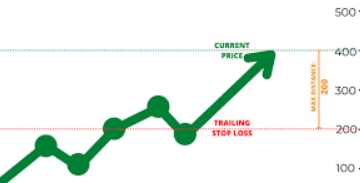
Drake Hampton
Mar 25, 2022 11:21
When the majority of people think of stocks, they think of publicly traded shares traded on a stock market. However, it is critical for investors to understand the many types of stocks available, their particular qualities, and the circumstances under which they may represent a sensible investment. The following sections discuss the major stock categories, with the goal of demystifying the numerous stock classes available to investors.

Common stock—occasionally referred to as ordinary shares—represents a company's proportionate ownership. This stock class entitles investors to earnings made, which are typically distributed in the form of dividends. Common investors elect a company's board of directors and have a say in how the company's policies are implemented. Holders of this stock class are entitled to a portion of a company's assets in the case of a liquidation, but only after preferred stockholders and other debt holders have been paid. Typically, company founders and workers receive common stock.
By contrast, preferred stock, or preference shares, entitles the bearer to periodical dividend payments prior to common shareholders receiving dividends. As indicated previously, preferred shareholders are also compensated first in the event of the company's dissolution or bankruptcy. Preferred stock lacks voting rights and is ideal for investors wanting a steady stream of passive income.
Numerous businesses issue both ordinary and preferred stock. For instance, Alphabet Inc.—Google's parent company—lists Alphabet Inc. (GOOGL), its common stock in the Class A category, and Alphabet Inc. (GOOG), its preferred Class C stock.
Growth stocks, as the name implies, are stocks predicted to rise at a higher rate than the broader market. By and large, growth stocks outperform during periods of economic prosperity and low interest rates. For example, technology stocks have profited strongly in recent years, owing to a solid economy and easy access to capital. Investors may track growth stocks by investing in the SPDR Portfolio S&P 500 Growth ETF, which is a themed exchange-traded fund (ETF) (SPYG).
On the other hand, value stocks generally trade at a discount to what a company's performance would suggest, implying more appealing values than the larger market. Value stocks, such as those in the financial, healthcare, and energy sectors, typically prosper throughout economic recovery cycles, as they typically produce predictable revenue streams. By adding the SPDR Portfolio S&P 500 Value ETF (SPYV) to their watchlist, investors may follow value stocks.
Income stocks are shares that generate regular income by transferring a company's earnings or surplus cash to shareholders in the form of dividends that are greater than the market average. Typically, these stocks—think utilities—have lower volatility and less capital appreciation than growth stocks, making them an attractive option for risk-averse investors seeking a steady stream of income. Through the Amplify High Income ETF, investors may gain exposure to income stocks (YYY).
Blue-chip stocks are those that are well-established and have a significant market capitalisation. They have a lengthy track record of consistently providing reliable revenue and dominating their business or area. Conservative investors may overweight blue-chip stocks in their portfolios, particularly during times of uncertainty. Several blue-chip stocks are Microsoft Corporation (MSFT), McDonald's Corporation (MCD), and oil behemoth Exxon Mobil Corporation (XOM).
Cyclical stocks are intimately linked to the performance of the economy and often track economic cycles of growth, peak, recession, and recovery. They often exhibit greater volatility and outperform other stocks during periods of economic prosperity, when customers have more discretionary cash. Cyclical stocks include Apple Inc. (AAPL) and sports apparel behemoth Nike, Inc. (NKE). Investors may diversify their portfolios with cyclical stocks by purchasing the Vanguard Consumer Discretionary ETF (VCR).
Non-cyclical stocks, on the other hand, operate in "recession-proof" industries that typically do well regardless of the state of the economy. In an economic slowdown or slump, non-cyclical stocks often outperform cyclical stocks, since demand for core products and services remains relatively stable. The Vanguard Consumer Staples ETF (VDC) invests in large-cap defensive stocks such as personal care major Procter & Gamble (PG) and beverage companies PepsiCo, Inc. (PEP) and The Coca-Cola Company (KO) (KO).
In general, defensive stocks generate consistent returns over a wide range of economic situations and stock market settings. These businesses often sell necessary goods and services, such as consumer basics, healthcare, and utilities. Defensive stocks can help safeguard a portfolio from significant losses during a sell-off or bear market. Additionally, a defensive stock might be a value, income, non-cyclical, or blue-chip stock. AT&T Inc. (T) and Cardinal Health, Inc. (CAH) are two defensive stocks featured in the Invesco Defensive Equity ETF's core holdings (DEF).
When a stock goes public, it conducts an initial public offering (IPO) (IPO). Prior to the company's stock listing on the stock market, IPO stock is often assigned at a discount. Additionally, it may include a vesting schedule to discourage investors from selling all of their shares immediately upon the stock's first public offering. Additionally, market analysts use the phrase "IPO stocks" to refer to newly listed stocks. Investors can watch forthcoming initial public offerings (IPOs) on the Nasdaq website.
A penny stock is a security with a market capitalization of less than $5 that is regarded highly speculative. Although some penny stocks trade on larger exchanges, the majority trade on the OTCQB, an OTC market for US stocks administered by OTC Markets Group. When placing buy and sell orders in penny stocks, investors should consider utilizing limit orders, as they sometimes have a big spread between the bid and ask prices.
Penny stocks gained widespread popularity in popular culture with the publication of "The Wolf of Wall Street," a film about a former stockbroker who ran a penny stock fraud. Investors interested in penny stocks can consider the iShares Micro-Cap ETF (IWC).
Environmental, social, and corporate governance (ESG) stocks place a premium on environmental stewardship, social justice, and ethical corporate governance standards. For example, an ESG stock may be a firm that commits to reducing carbon emissions faster than required by national and industry standards, or one that makes equipment for renewable energy infrastructure.
In recent years, ESG stocks have gained favor among millennials—a socially conscious generation that is more inclined to invest in causes they believe in and support. Investors may gain exposure to ESG stocks by purchasing the Vanguard ESG US Stock ETF (ESGV).

Mar 24, 2022 11:47

Mar 25, 2022 11:55